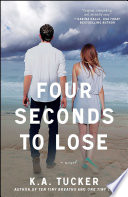

In 'Four Seconds to Lose,' the author emphasizes the importance of making quick decisions in both personal and professional contexts. The narrative illustrates how hesitation can lead to missed opportunities and the potential for regret. By showcasing characters who face critical moments where they need to act swiftly, the book highlights that the ability to make immediate decisions can often determine the outcome of a situation. This idea encourages readers to trust their instincts and to understand that sometimes, taking action is more beneficial than overanalyzing a decision. The author provides examples of how successful individuals often make decisions in a fraction of a second, leading to significant outcomes. This concept can be applied in various aspects of life, from business negotiations to personal relationships, suggesting that the speed of decision-making can be a crucial competitive advantage.
Continue readingThe narrative delves into the significance of emotional intelligence in fostering and maintaining relationships. Characters in the book demonstrate how understanding and managing one's emotions, as well as empathizing with others, can lead to stronger connections. The author argues that emotional intelligence is not just beneficial in personal life, but also in professional settings, where collaboration and teamwork are essential. By portraying various interactions, the book illustrates how recognizing emotions can help in resolving conflicts and building trust. This idea serves as a reminder that success is not solely determined by technical skills or knowledge, but also by the ability to navigate social dynamics effectively.
Continue readingThroughout 'Four Seconds to Lose,' the author explores how the choices we make, often in a matter of seconds, can significantly alter our life paths. The characters face pivotal moments where their decisions lead to unforeseen consequences, both positive and negative. This theme encourages readers to reflect on their own choices and the ripple effects they can create. The book suggests that understanding the weight of our decisions can empower us to make more intentional choices. It also highlights the importance of learning from past decisions, as each choice contributes to our growth and development. This idea resonates with the concept of personal responsibility and the notion that we are architects of our own destinies.
Continue readingTrust emerges as a central theme in 'Four Seconds to Lose,' with the author emphasizing its critical role in achieving success. The narrative illustrates how trust is built through consistent actions and honesty, and how it can be easily broken through betrayal or deceit. The characters’ journeys demonstrate that trust is foundational for effective collaboration, whether in business partnerships or personal relationships. The book suggests that cultivating trust requires vulnerability and transparency, encouraging readers to reflect on their own practices in building trust with others. This idea underscores the importance of integrity and reliability in all interactions, as trust can significantly influence outcomes in both personal and professional arenas.
Continue readingFear is a recurring theme in 'Four Seconds to Lose,' where the author discusses how it can paralyze individuals and prevent them from seizing opportunities. The narrative encourages readers to confront their fears and take calculated risks to achieve their goals. Through character development, the book illustrates that overcoming fear often leads to personal growth and new possibilities. The author argues that embracing risk is essential for innovation and success, as playing it safe can lead to stagnation. This idea resonates with the entrepreneurial spirit, suggesting that those who are willing to step outside their comfort zones are more likely to achieve extraordinary results.
Continue readingResilience is portrayed as a vital trait in 'Four Seconds to Lose,' with characters facing numerous challenges that test their perseverance. The author emphasizes that setbacks are a natural part of life, and the ability to bounce back from adversity is crucial for long-term success. The narrative illustrates that resilience can be cultivated through experience and mindset, encouraging readers to view challenges as opportunities for growth. This idea serves as a powerful reminder that failure is not the end, but rather a stepping stone towards achieving one’s aspirations. The book advocates for developing a resilient mindset to navigate life’s unpredictability with confidence.
Continue readingSelf-reflection is highlighted as a key component of personal development in 'Four Seconds to Lose.' The author encourages readers to take time to reflect on their experiences, decisions, and emotions. This practice of introspection is portrayed as essential for understanding oneself and improving future decision-making. The characters in the book engage in self-reflection, leading to greater self-awareness and better choices. The author argues that self-reflection can help individuals align their actions with their values and goals, fostering a more fulfilling life. This idea underscores the importance of taking the time to pause and evaluate one’s journey, as it can lead to profound insights and personal growth.
Continue reading